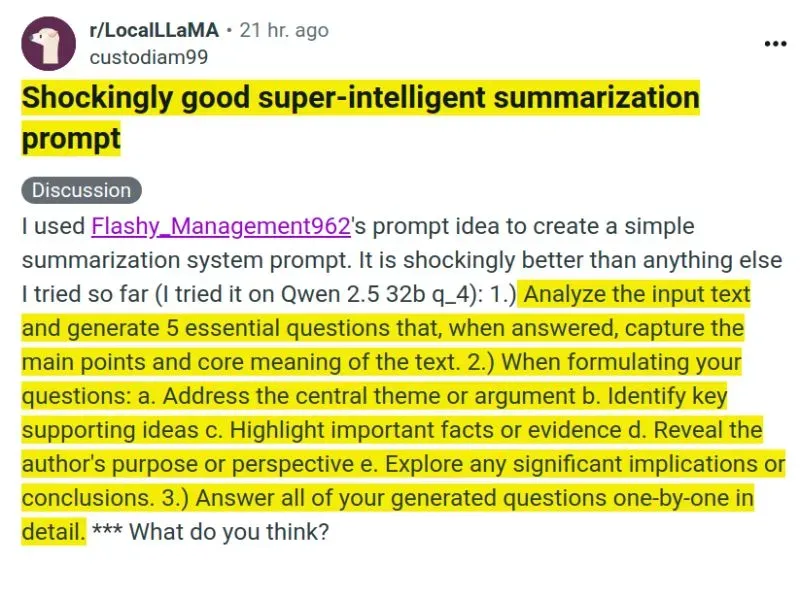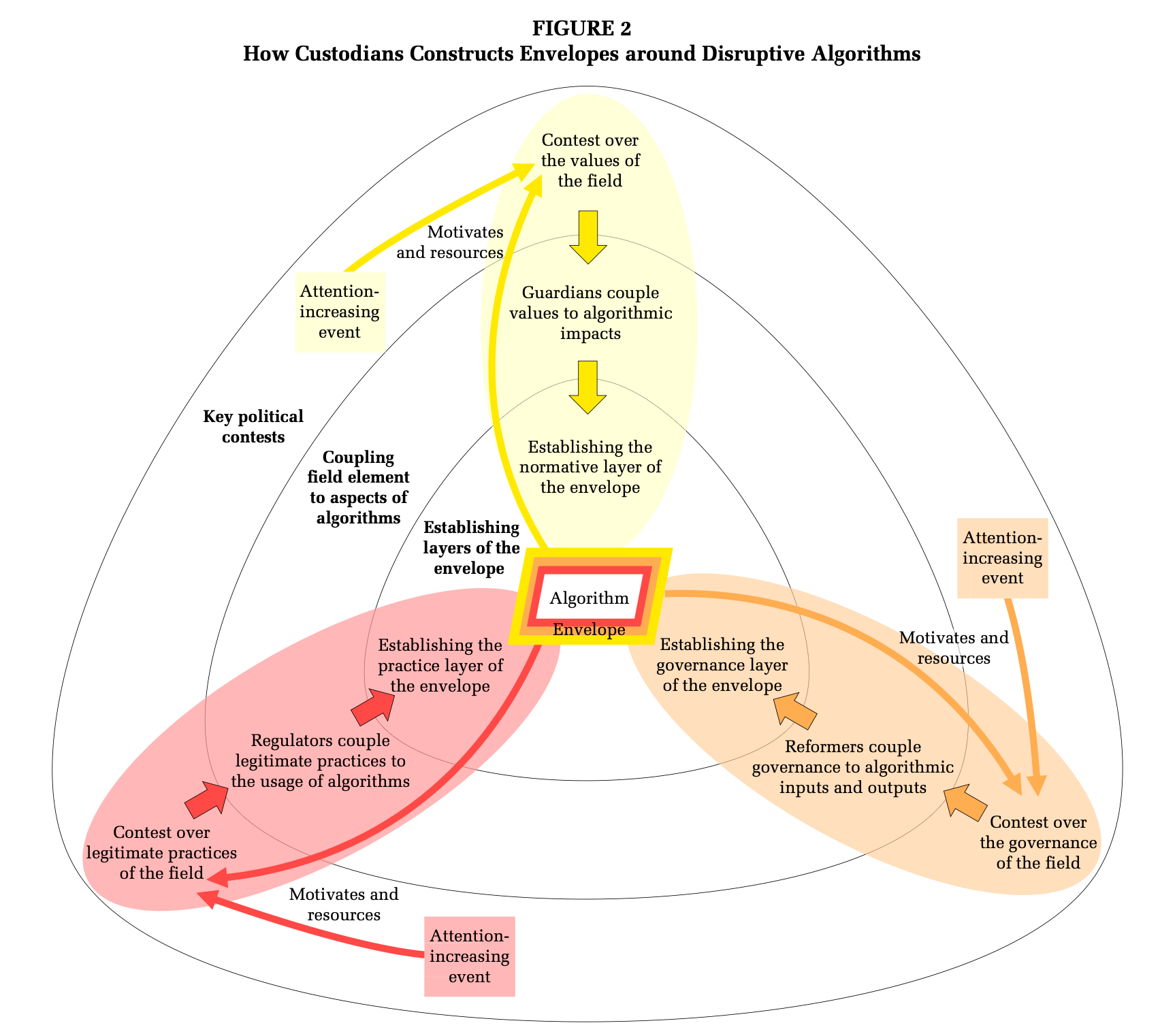Symbolic Differentiation
This week: A summarization prompt, questioning questioning behavior, taming disruptive algorithms, and symbolic differentiation (so hot right now)
Summarization Prompt
Shockingly good adjectives that capture your attention and causes you to try this one weird trick that saves you trillions of years of work

- Analyze the input text and generate 5 essential questions that, when answered, capture the main points and core meaning of the text.
- When formulating your questions:
- address the central theme or argument
- Identify key supporting ideas
- highlight important facts or evidence
- reveal the author’s purpose or perspective
- Explore any significant implications or conclusions
- Answer all of your generated questions one-by-one in detail
Analyzing Human Questioning Behavior
How and Why?

“Our analysis reveals a significant presence of causal questions (up to 42%) within the dataset, for which we. develop an iterative prompt improvement framework to identify all causal queries, and examine their unique linguistic properties, cognitive complexity, and source distribution.”

Roberto Ceraolo, Dmitrii Kharlapenko, Ahmad Khan, Amélie Reymond, Rada Mihalcea, Bernhard Schölkopf, Mrinmaya Sachan, & Zhijing Jin. (2024). Analyzing Human Questioning Behavior and Causal Curiosity through Natural Queries.
https://arxiv.org/abs/2405.20318
Constructing envelopes: How institutional custodians can tame disruptive algorithms
Why build silos when you can build envelopes?

“We have argued that envelopes around disruptive algorithms emerge through a conjunctive process in which different actors construct normative, governance, and practice layers that jointly constrain disruptive algorithms. Although our study focused on the role of custodians, we posit that such envelopes may be constructed by a broader range of actors, including those driven primarily by self-interest rather than the protection of fields. Owners, designers, and proponents of algorithms, for instance, may construct envelopes around algorithms to constrain their disruptive impacts and make them more legitimate, thus avoiding the uncertainty of constraints stemming from envelopes constructed by antagonists or field custodians”
Marti, E., Lawrence, T. B., & Steele, C. W. (2024). Constructing envelopes: How institutional custodians can tame disruptive algorithms. Academy of Management Journal, (ja), amj-2019.
It Is Not the Whole Story: Toward a Broader Understanding of Entrepreneurial Ventures’ Symbolic Differentiation
But we’re different! Symbolically. The truth is that we’ve got a beef with the USPO.

“Our findings strongly support our main hypotheses that ventures’ patent stocks influence their narrative distinctiveness differently depending on the hotness of their industry. We found that, compared to patent-poor ventures, patent-rich ventures exhibit substantially higher levels of narrative distinctiveness when competing in cold industries, but substantially lower levels of narrative distinctiveness when competing in hot industries.”
Taeuscher, K., & Lounsbury, M. D. (2024). It Is Not the Whole Story: Toward a Broader Understanding of Entrepreneurial Ventures’ Symbolic Differentiation. Academy of Management Journal, (ja), amj-2023.
Reader Feedback
“AgentOps sounds expensive until you consider the cost of implementing any policy.”
Footnotes
There is frustration among some CxO’s with the general progress in adopting AI technology. There is frustration among some junior executives and middle managers about the commitment to supporting the adoption of AI technology, which is not trivial given: data quality, AgentOps, guardrails, deployment, policy formalization, envelope construction and operational change. Accurate estimation? Both? Neither? What would need to change to change the outcomes?
CTA
Was this forwarded to you? Do my views intrigue you and you wish to subscribe to my newsletter? Subscribe here.
